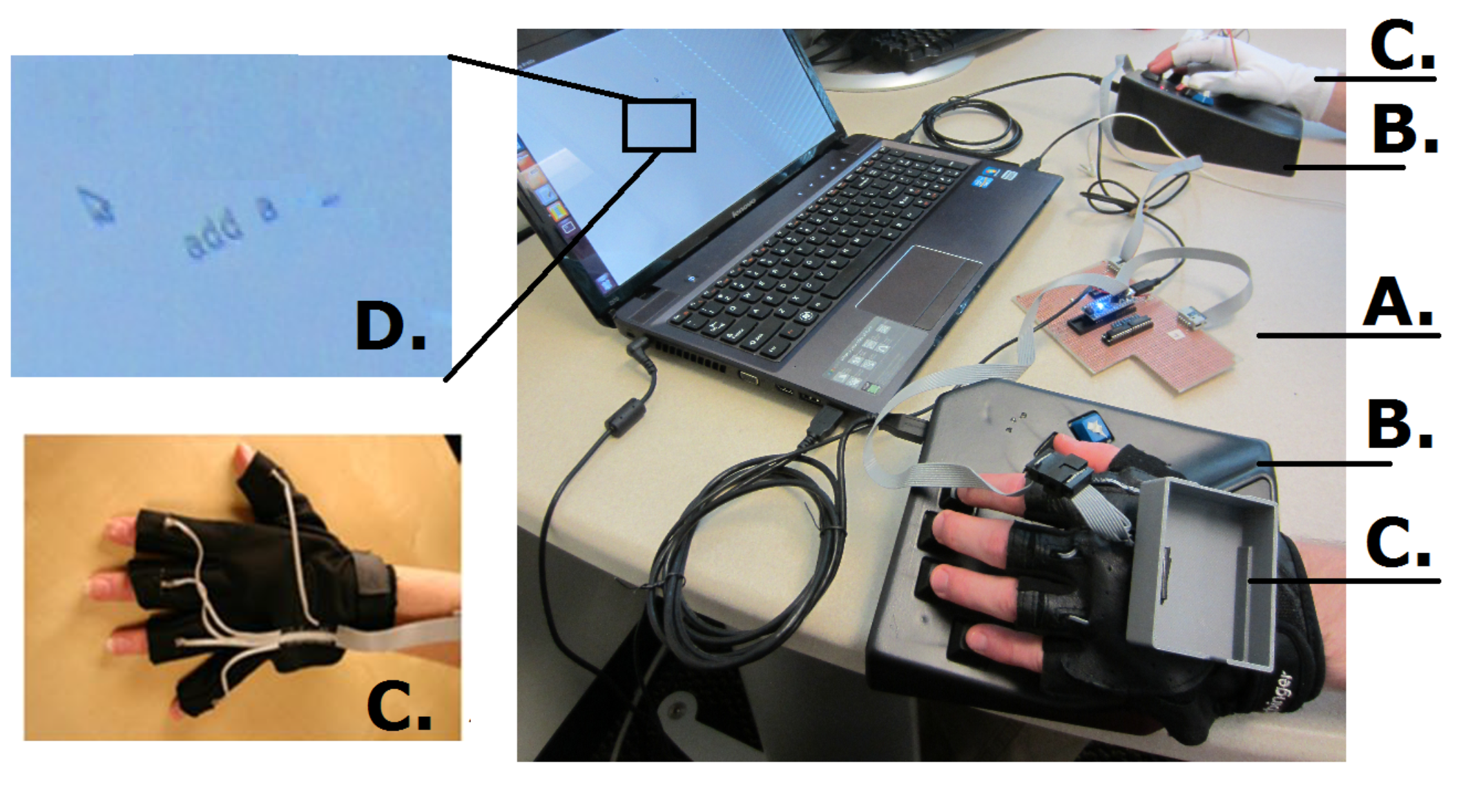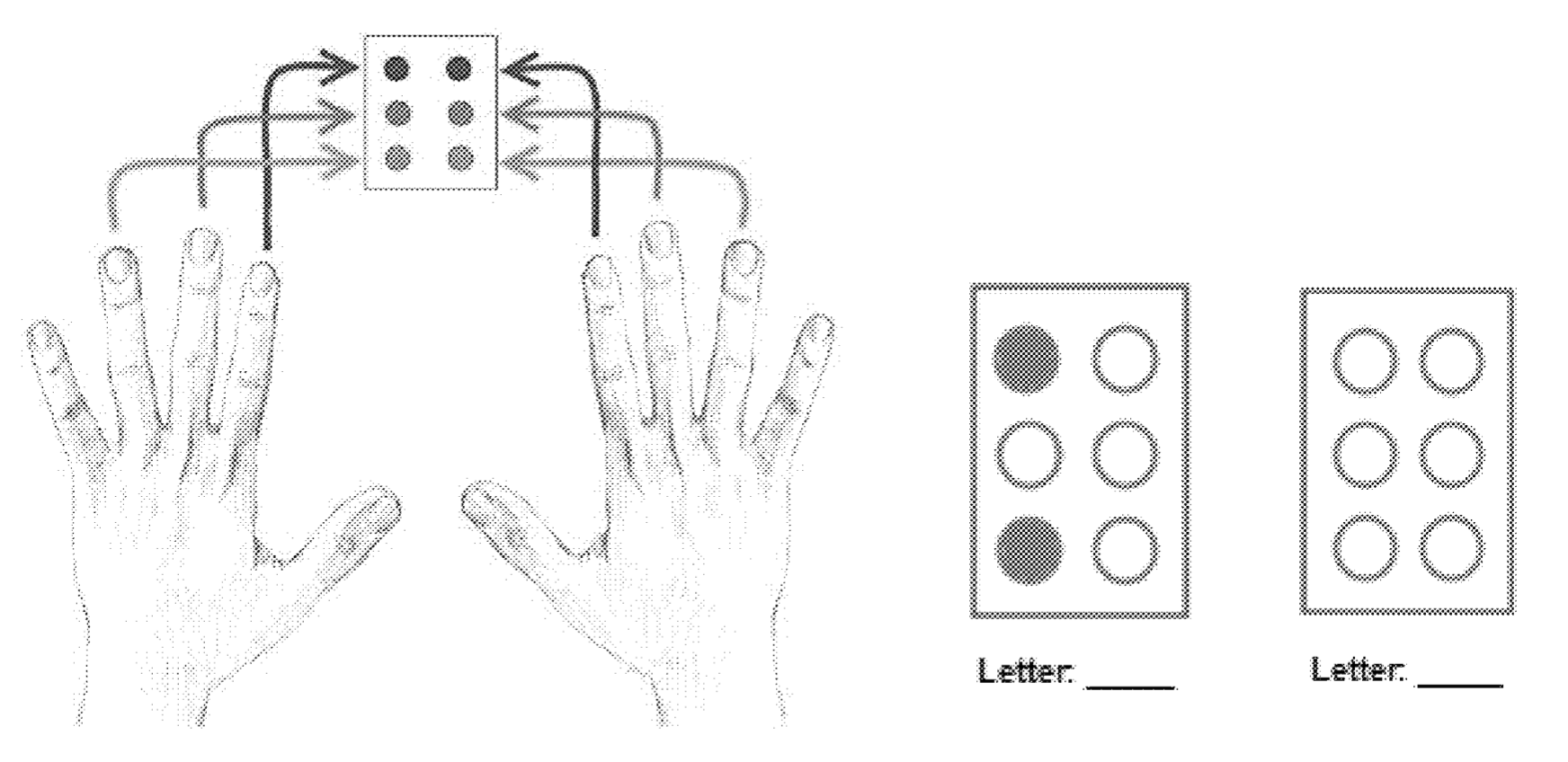Incorporating passive haptic learning, this technology has demonstrated the ability to teach users to type and read Braille through tactile stimulation without requiring their active attention to the stimulus. This wearable interface was developed by researchers at Georgia Tech and teaches “muscle memory” of chorded patterns through vibration stimuli. The system includes a pair of gloves with one vibration motor in each finger and a programmed microcontroller to drive the glove interface. The microcontroller coordinates vibration timings and sequences to correspond with audio prompts and enhance learning. In addition to teaching Braille, it can quickly and effectively teach users to play piano and other musical instruments, use a stenography system, and more.
- Fast: This technology significantly reduces the time needed to learn Braille. In only four hours, eight test subjects were taught to type the entire Braille alphabet as well as read Braille (with >90% accuracy), while simultaneously focusing on another task.
- Simplifies learning: A lack of certified Braille teachers, few learning centers, and a steep learning curve make teaching Braille difficult. This technology greatly simplifies the learning process.
- Passive: Because it doesn’t require the user’s attention on the stimuli, this technology allows them to focus on other tasks while still learning.
- Lightweight: The small, wearable, glove-like system fits on all sizes of hands.
- Improves literacy: With only 10% of blind school children able to read Braille, this technology may help them to more quickly learn to both read and type Braille.
Instruction for skills that require chorded input, such as:
- Typing and learning to read Braille
- Playing piano and other musical instruments
- Stenography
- Flight simulators
- Simulated training, such as combat
- Operating machinery
- Gaming add-ons for augmented reality

Current system in use for active practice: (A) the microcontroller that controls the attached gloves’ vibration motors (C); (B) the keyboards; (D) the feedback display

Mapping diagram for Braille (left); example of a visual quiz (center); example of a tactile quiz (right)
